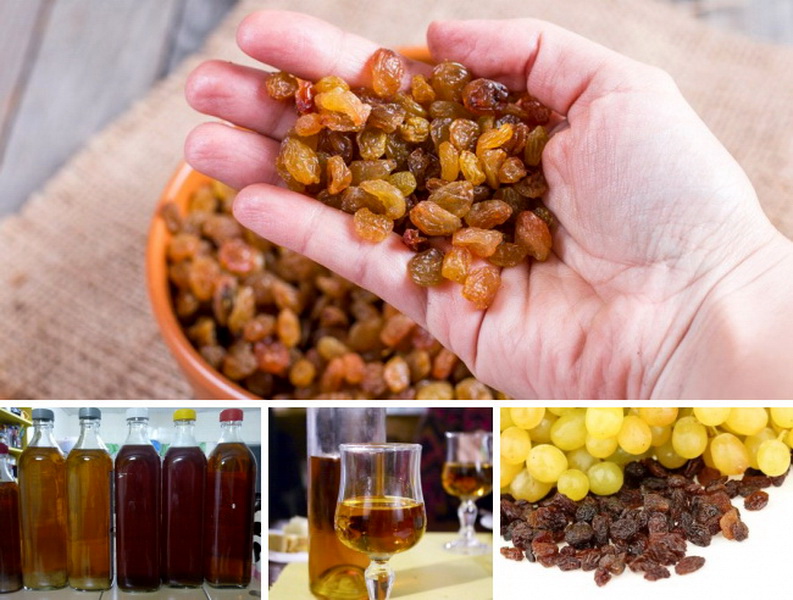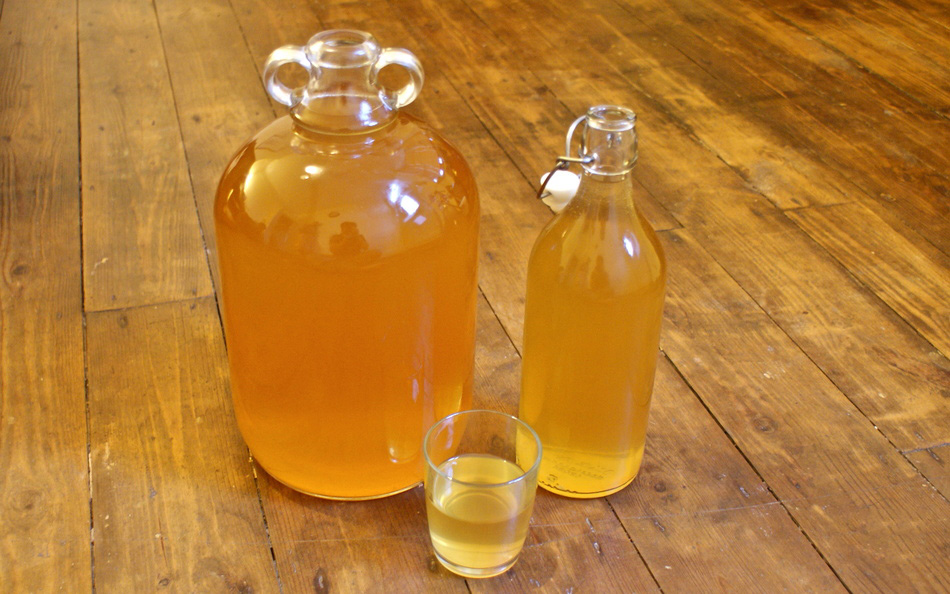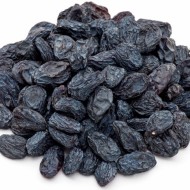How to make aromatic raisin wine: 10 step-by-step recipes with photos
Content
The history of raisin wine
For the first time, the ancient Romans started talking about raisin wine two millennia ago. The ancient Roman writer Pliny the Elder mentioned the drink in his works, calling it "molten gold". On the territory of modern Russia, rosenkovo winemaking was started only by the middle of the 19th century. The ritual drink very soon moved to the tables of ordinary citizens and became a serious competitor to traditional wine. So, very soon a duty was imposed on him, and they also began to control all stages of production.
The Greek island of Santorini occupies the first place in the production of raisin wine in our time. "Vinsanto", prepared according to an exclusive technology, has a honey velvety taste with a slight sourness and spicy notes.

The benefits and harms of raisin wine for the body
Raisins are a very valuable dried fruit in and of itself. It is rich in the following nutrients:
- organic acids;
- vitamins of group B, C;
- trace elements (K, Ca, B, Mg);
- fructose;
- antioxidants.
The most beneficial are raisins, made from dark berry varieties. However, whichever grape is used for cooking, when dry, it:
- removes toxins from the body;
- reduces the risk of cancer;
- has antibacterial and antiviral properties;
- has a beneficial effect on the joints;
- relieves puffiness;
- helps fight stress;
- strengthens the gums;
- has a positive effect on the cardiovascular system;
- normalizes the digestive tract.

For an alcoholic drink to be beneficial, its daily dose should not exceed 150 ml. You should refrain from drinking raisin wine:
- pregnant women;
- women during lactation;
- children under 18;
- diabetics;
- people with heart failure;
- patients with tuberculosis;
- with obesity;
- if enterocolitis is diagnosed.
In addition to the alcohol component, this list of restrictions is due to the fact that dry berries contain 8 times more sugar than fresh grapes.
Rules for choosing raisins for homemade wine
If you are looking to make homemade rosé wine, you need good, fresh raw materials. It is best to buy raisins from the market or dry them yourself. Pay attention to the appearance of the berries. They should look natural, have a natural color and a whitish coating. The latter is a naturally occurring yeast that promotes normal fermentation. That is why it is not recommended to wash purchased dried fruits.
Very often, dried grapes are treated with chemicals to increase shelf life. It is not difficult to determine this: the raisins will have a pale color, a glossy surface and ferment poorly.
- Light
- Dark
- Black with a touch
Sourdough recipe
Wine starter is the base for any homemade wine. It is better to do it immediately before the preparation of the drink itself, since it has a limited shelf life (no more than 10 days):
- Put 200 g of raisins chopped with a blender in a liter jar.
- Pour in 250 ml of slightly warmed water.
- After adding 50 g of granulated sugar, stir well until the crystals are completely dissolved.
- Cover the container with thick gauze and keep for 3-4 days in warm conditions (+ 22 ... + 24 ° С).
If fermentation is successful, the raisins will float to the surface, a characteristic hiss, foam, a slightly sour smell with hints of alcohol will appear.
Video "Wine from raisins at home"
This video presents a master class on making homemade raisin wine.
Step-by-step raisin wine recipes
With a rich history, raisin wine has many different ways of making it. From 1 kg of raw materials, you can make 4–5 liters of an alcoholic drink. Having chosen the 10 most popular recipes for you, we will tell you about each of them in more detail.
Classical
- Go through a kilogram of raw materials, and then pour 2 liters of raw water.
- When the berries are swollen, beat them with a blender.
- After putting the raisin mass into a deep container, pour in 500 ml of the starter culture, the water that remains from soaking, and add 3 liters of purified water on top.
- Leave the starter culture covered with thick gauze to ferment for 3 days, periodically shaking and removing the foam.
- On day 4, put on a water seal. Leave the wine and let it ferment for a few weeks.
- When the wort becomes clear, a sediment will fall to the bottom, and the fermentation calms down, carefully drain the liquid.
- Pour the workpiece, close it with a water seal and lower it into the basement.
- After 2-3 months, decant the wine and then bottle. Putting them horizontally, hold the drink for another six months.

With sugar
- Twist a kilogram of raw materials, add 500 ml of starter culture, 1 kg of granulated sugar, and then pour 7 liters of water.
- Putting it under a water seal, leave the wort to ferment for 4–5 days at a temperature of + 18… + 26 ° С.
- Drain the liquid, dilute a kilogram of sugar in it and return it under the shutter.
- Repeat the procedure after 5 days.
- Decant the wine after 2 months. Bottled, store in a cool dry place for six months, periodically pouring out of sediment.
With rice
- Pour 1.5 kg of granulated sugar into 1.5 liters of water, ½ tsp. citric acid and boil the syrup.
- After cooling the solution to 40 ° C, pour 1 kg of regular rice into it.
- After 24 hours, add 0.5 kg of raisins, 2.5 l of water, 500 ml of wine culture. Covering with thick gauze, leave to ferment for 2-3 days, periodically shaking and removing the foam.
- After the time has elapsed, place the bottle under a water seal in a warm place.
- When fermentation is complete, drain the blank. Close the shutter again, keeping the wine until fully clarified.
- After 1.5 months, decant the drink, bottle and leave for another 3 months.
With dried fruits
- Put dried fruits (600 g of raisins, 800 g of dried apricots, 250 g of prunes) in a deep container, pour 4.5 liters of boiling water over them. Let it brew for 1.5 hours and then strain.
- Combine the fruits passed through a meat grinder with the strained liquid, add 1.5 cups of granulated sugar and cool to 20 ° C.
- After adding 500 ml of wine sourdough, leave to ferment for 6 days, periodically shaking and removing the foam.
- When fermentation is over, drain the wort, add 1.5 cups of sugar, and then place it under a water seal for 2 months.
- After the allotted time, pour the decanted wine into bottles, adding a little alcohol (10% of the total). Soak the drink in a cool, dark place for another 8 months.

With beer
- Pour 2 kg of dry grapes with 5 liters of water, place under a water seal and let it ferment for 2 weeks. When foam forms, shake the liquid 4 times daily.
- When fermentation is complete, carefully drain the wort into another container.
- Add 400 g of granulated sugar, half a liter of beer, and then leave to infuse for 7 days in a cool place.
- Strain the finished drink after a week.

With vodka
- Putting 0.5 kg of raisins in a deep container, fill the raw material with a kilogram of granulated sugar, add 500 ml of starter culture and pour 4 liters of water.
- Place under a water seal until fermentation has completely stopped.
- After a month, filter the wort, pour it into another container, and then add a glass of vodka.
- Bottled, soak the wine for 3 months until fully maturing in a cool dark place.
With apples
- Soak 2.5 kg of dried fruit in 8.5 liters of water, filling them with the same amount of sugar.
- Add 3 kg of diced apples.
- After 3 hours, pour in 500 ml of wine leaven and place under a water seal. Let the workpiece ferment for 1 month in a dark, warm room.
- After the time has elapsed, decant the drink, pour into bottles and leave to ripen for 1–2 months at + 15 ° С.
Since raisins contain a lot of sugar, it is better to choose apples of sour varieties ("Semerenko", "Antonovka" or "White filling").
With hibiscus
- Pour 1 kg of raisins, 1.5 kg of granulated sugar, a glass of hibiscus into a deep container.
- After filling the contents of 6 liters of water, let it boil for 5-7 minutes.
- After cooling to 20 ° C, add 500 ml of wine starter. Let the wort ferment, and after 5-6 days, carefully drain the drink.
- Place it under a water seal again and move the bottle of wine to the cellar for several months.
- After the allotted time, pour the decanted wine into bottles.
With strawberry jam
- Dissolve 1 liter of strawberry jam with 2.5 liters of warm water, and then add 150 g of dried fruit there.
- After placing a water seal, let the wort ferment at room temperature.
- At the end of fermentation, decant the wine, bottle and store in a cool dark place for six months until fully ripe.
In Polish
- Use a blender to beat each kilogram of raisins and dried apricots.
- Add 200 g of elderberries, blueberries or blackberries to the fruit mass, pour in sweet syrup (1.2 kg of granulated sugar per 10 liters of water), and also add diluted wine yeast.
- After waiting for fermentation, place the bottle under the shutter.
- After 2 weeks, when the liquid stops boiling, drain the wort and close it again with a water seal.
- Repeat the procedure until the wine is clear. Then decant it and bottle it. The final maturation will come in 2-4 weeks.
Features of storage of a drink
It is best to store sealed bottles in a cellar or basement at a temperature of + 10 ... + 16 ° C. The average strength of rosé wine is 12-15 ° С. However, the longer the drink is aged, the stronger and richer it becomes. You can add a couple of dried berries to make it slightly sparkling, reminiscent of champagne.

Practical tips for serving raisin wine
Wine made from dry grapes has a sweet, rich taste, and therefore is suitable for any hot dishes. The drink is well compatible with Japanese cuisine: sushi, noodles, rice. It can also be combined with a variety of snacks.
To experience the full palette of taste, rose wine must have a temperature of 8-13 ° C. It is best served in 300-350 ml glasses, on a thin stem, with a bowl expanding upward. Pour the drink by ¾ of the total volume.
Making raisin wine is a snap. Doing home winemaking, you can give free rein to your imagination and come up with your own original recipe.



